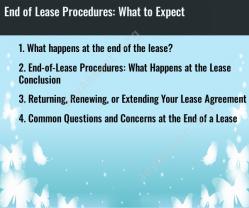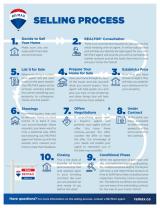What is a property inspection report?
A property inspection report is a detailed written document prepared by a licensed home inspector after examining a property, usually during the process of buying or selling a home. It gives homebuyers (and sometimes sellers) an objective assessment of the property's current condition, helping them make informed decisions.
Key Points About a Property Inspection Report:
Purpose
Identifies existing or potential problems in the home.
Helps buyers understand repair and maintenance needs before purchase.
Can be used to negotiate repairs or adjust the purchase price.
What It Covers
A typical inspection report includes evaluations of:Structural components (foundation, walls, roof, ceilings, floors).
Exterior (siding, windows, doors, drainage).
Roofing (shingles, gutters, chimneys).
Plumbing system (pipes, water heater, fixtures).
Electrical system (wiring, outlets, panels).
HVAC (heating, ventilation, air conditioning).
Interior (walls, ceilings, doors, stairs).
Insulation and ventilation (attics, crawl spaces).
Appliances (when included).
Format
Usually includes descriptions, photos, and notes on observed issues.
Categorizes findings by severity: minor maintenance, recommended repairs, or urgent safety hazards.
Limitations
It’s a visual inspection only—inspectors don’t open walls or perform invasive testing.
It doesn’t guarantee future conditions or cover areas that aren’t accessible.
Importance for Homebuyers
Offers peace of mind before making a major investment.
Provides leverage in negotiations.
Serves as a roadmap for future maintenance.
In short, a property inspection report is like a health check-up for a house—it highlights the current condition and helps buyers decide whether to proceed, renegotiate, or walk away from a purchase.
Here’s a typical outline of a property inspection report, which shows the structure and key elements you can expect as a homebuyer:
Sample Property Inspection Report Outline
1. Cover Page
Property address
Inspection date and time
Inspector’s name and license number
Client name
2. Introduction / Scope of Inspection
Purpose of the inspection
What is included (e.g., visual examination, major systems)
What is not included (e.g., mold testing, pest inspection, structural engineering)
Disclaimer / legal limitations
3. Summary of Findings
Quick overview of major issues:
Urgent repairs
Recommended repairs
Minor maintenance items
Often presented in a table format for easy reference
4. Detailed Inspection Sections
A. Exterior
Roof (shingles, flashing, gutters, chimneys)
Walls, siding, windows, doors
Driveways, walkways, patios, fences
Drainage / grading
B. Structural Components
Foundation
Floors, walls, ceilings
Beams and columns
Basements / crawl spaces
C. Interior
Walls, ceilings, floors, stairs
Doors and windows
Cabinets, closets
D. Plumbing System
Pipes and fittings
Water heater
Faucets, sinks, toilets, showers
Drainage / leaks
E. Electrical System
Service panel / breakers
Wiring and outlets
Lighting fixtures
Smoke detectors
F. HVAC System
Heating units / furnaces
Air conditioning units
Ventilation and ductwork
Thermostats
G. Insulation and Ventilation
Attics and crawl spaces
Vapor barriers
Air flow and moisture concerns
H. Appliances (if included)
Range, oven, dishwasher, refrigerator
Washer / dryer connections
5. Photographs
Images of defects, areas of concern, or important observations
6. Recommendations
Suggested repairs or maintenance actions
Estimated urgency / severity
Possible cost considerations (optional)
7. Conclusion
Overall assessment of property condition
Statement that the report is based on visual inspection only
Signature and license of the inspector
Key Tip:
A good report clearly separates urgent safety issues from minor cosmetic items, making it easy for buyers to prioritize repairs or negotiate with sellers.
Understanding Property Inspection Reports
A property inspection report is a detailed evaluation of a property's condition at a specific point in time. It is created by a professional home inspector who examines the home's major systems and structural components. The report is an objective assessment, not a pass/fail grade. It provides a comprehensive look at the home's health, from the roof and foundation to the electrical and plumbing systems. For both buyers and sellers, this report is a crucial tool for making informed decisions.
Key Components of a Property Inspection Report
While formats may vary, most reports include a similar set of key components:
Executive Summary: A brief, easy-to-read summary of the most significant issues found. This is a great starting point for understanding the overall condition of the property.
System-by-System Breakdown: The bulk of the report will be organized by system, such as the roof, foundation, HVAC, plumbing, and electrical. Each section will detail what was inspected and any issues discovered.
Descriptions and Photos: Inspectors typically include descriptive text and photographs to illustrate any problems or concerns. This helps clarify the findings and makes the report more tangible.
Recommendations: The report will often provide recommendations for repair, replacement, or further evaluation by a specialist (e.g., an electrician or a structural engineer).
How to Read and Interpret Findings
Learning to read an inspection report correctly is essential. It's important to differentiate between major issues and minor ones.
Major Issues vs. Minor Fixes: A report will list everything from a cracked foundation to a dripping faucet. Focus on the major, safety-related, or expensive-to-repair issues first, such as structural problems, mold, or an aging roof. Minor cosmetic issues or routine maintenance items are generally less concerning.
Inspector's Language: Pay close attention to the inspector's wording. Phrases like "requires immediate attention" or "safety hazard" signal a serious problem. Conversely, terms like "monitor" or "cosmetic" suggest a less urgent issue.
Context is Key: Remember that no home is perfect. An older home, for example, is likely to have more wear and tear than a new one. The report should be interpreted within the context of the property's age and overall condition.
Common Issues Found in Inspections
While every home is unique, some issues are more common than others. These often include:
Roof and Attic Problems: Missing shingles, damaged flashing, or improper ventilation.
Plumbing Issues: Leaks, clogged drains, or old, corroded pipes.
Electrical Concerns: Outdated wiring, faulty outlets, or improperly installed electrical panels.
HVAC System Failures: An old or poorly maintained heating and cooling system.
Structural Defects: Cracks in the foundation, water intrusion, or sloped floors.
Using Reports for Buying, Selling, or Maintenance Decisions
The inspection report is a powerful tool for all parties involved in a real estate transaction.
For Buyers: The report gives you leverage in negotiations. You can ask the seller to make repairs, offer a credit for the repairs, or adjust the sale price. If the report reveals significant issues you're not comfortable with, it provides a reason to walk away from the deal.
For Sellers: An inspection before listing the property allows you to proactively address any issues, giving buyers more confidence. It can also help you accurately price the home and avoid surprises during the negotiation process.
For Homeowners: Even if you aren't buying or selling, an inspection can be a valuable maintenance tool. It can alert you to small issues before they become major problems and provide a prioritized list of repairs to budget for.











